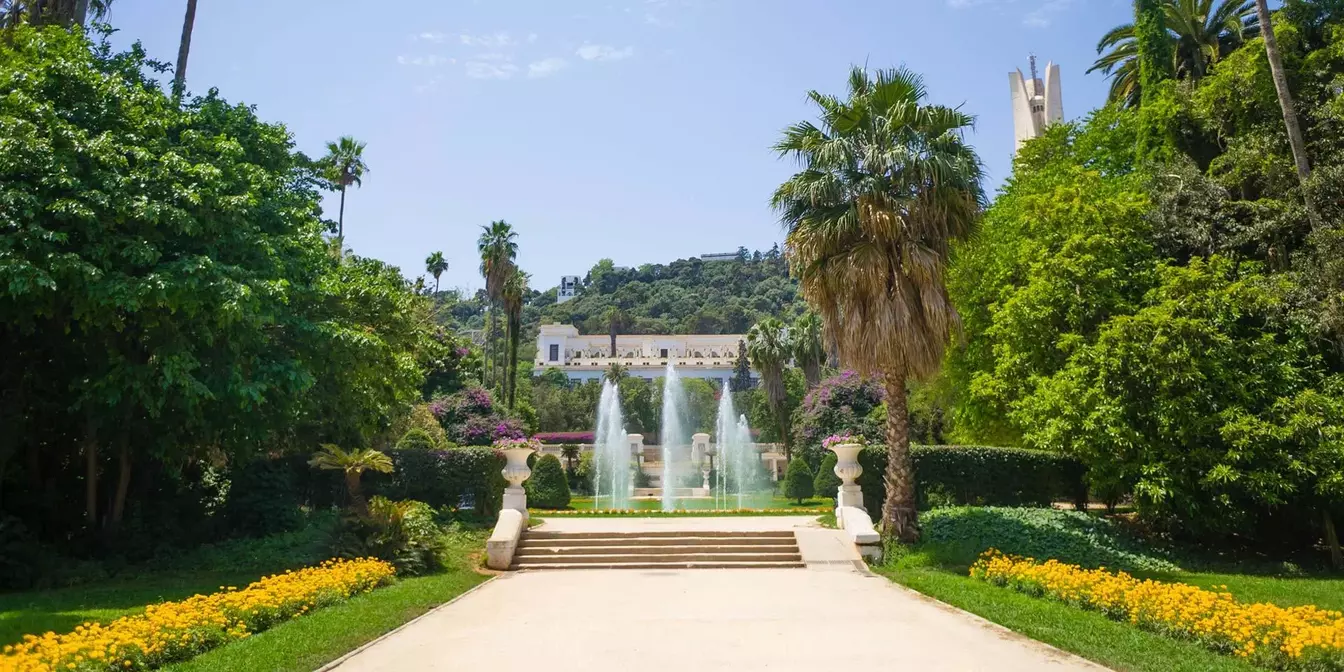
National Museum of Fine Arts of Algiers
Overall Rating: ⭐⭐⭐⭐☆ (4/5)
Rating Breakdown:
✔ Artistic Significance: ⭐⭐⭐⭐⭐ (5/5)
✔ Exhibits & Collections: ⭐⭐⭐⭐⭐ (5/5)
✔ Accessibility – ⭐⭐⭐☆☆ (3/5)
✔ Tourist-Friendly – ⭐⭐⭐☆☆ (3/5)
✔ Maintenance & Preservation – ⭐⭐⭐⭐☆ (4/5)
Weather
- Algiers experiences a Mediterranean climate characterized by hot, dry summers and mild, wet winters.
Tags
- Art Museum, Fine Arts, Algerian Art, European Masters
Timings
- The museum operates from 9:00 AM to 6:00 PM on Monday, Tuesday, Wednesday, and Saturday; from 9:00 AM to 5:00 PM on Thursday; and is closed on Friday and Sunday.
Time Required
- A visit typically requires 2 to 3 hours to thoroughly explore the extensive collections.
Entry Fee
- Information about the entry fee is not specified in the available sources.
Things to See & Do
- European Masterpieces: Admire works by renowned artists such as Monet, Matisse, Delacroix, Renoir, Gauguin, and Pissarro.
- Algerian Art: Explore a significant collection of Algerian art, showcasing the nation's rich artistic heritage.
- Sculptures and Decorative Arts: Discover an array of sculptures and decorative art pieces that highlight various artistic movements.
- Ceramics and Glassware: Examine exquisite ceramics and glassware reflecting intricate craftsmanship.
Best Time to Visit
- Spring (March to May) and autumn (September to November) offer pleasant weather, making it ideal for visiting the museum and exploring the surrounding areas.
Nearest Parking Spots
- Parking facilities are available near the Jardin d'Essai and along the streets adjacent to the museum; however, spaces may be limited during peak hours.
Overview
- The National Museum of Fine Arts of Algiers, inaugurated on May 5, 1930, stands as one of the largest art museums in Africa.
- Situated in the Hamma district adjacent to the Jardin d'Essai, the museum houses an impressive collection of approximately 8,000 works.
- Its holdings encompass paintings, drawings, engravings, sculptures, decorative arts, ceramics, and more, featuring pieces by both European masters and prominent Algerian artists.
- Pergola: An Italian-style pergola offering panoramic views of the city and bay.
- Jardin d'Essai: The adjacent botanical garden, providing a serene environment for visitors before or after their museum tour.
- Language Considerations: Exhibit descriptions are primarily in French and Arabic; arranging for a guide or translator can enhance the experience for non-French or non-Arabic speakers.
- Photography: Verify any restrictions on photography within the museum to ensure compliance with regulations.
- Combine Visits: Given its proximity to the Jardin d'Essai, consider visiting both the museum and the botanical garden in a single trip for a comprehensive cultural experience.
- By Car: Accessible via the main roads leading to the Hamma district; parking is available near the Jardin d'Essai.
- By Public Transportation: Local buses and taxis serve the Hamma district; it's advisable to check current routes and schedules for convenience.
- On Foot: For those staying nearby, walking to the museum offers an opportunity to explore the surrounding area and enjoy views of the city.